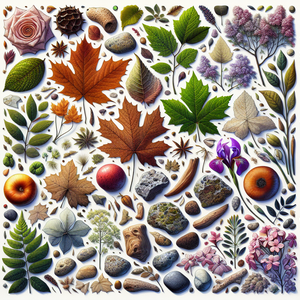A Sugar-Coated Past: The Surprising History of Edible Architecture

Edible architecture has its origins in the grand banquets and celebrations of medieval Europe. During this time, food was not merely nourishment; it was also a symbol of wealth, power, and artistic skill. One of the earliest forms of edible architecture appeared in the form of “subtleties”—elaborate centerpieces crafted from sugar, marzipan, or pastry. These creations depicted castles, mythical creatures, or famous landmarks, often with intricate details that showcased the craftsmanship of their makers. Sugar, a rare and expensive commodity in medieval Europe, played a significant role in these edible sculptures. Its use not only added sweetness but also served as a status symbol for the wealthy elite. For example, a banquet centerpiece made entirely of sugar might depict a miniature castle or an animal in motion, demonstrating both the host's affluence and the artist's skill. The tradition of edible architecture took another leap forward in 19th-century Germany with the popularization of gingerbread houses. Inspired by the Brothers Grimm fairy tale Hansel and Gretel, these delightful creations became a staple of holiday celebrations. Families would gather to craft gingerbread homes adorned with colorful candies and icing, and what began as a humble pastime eventually blossomed into a competitive art form. Today, gingerbread competitions around the world showcase stunning creations, from replicas of famous buildings to elaborate fantasy villages—all made from edible materials.
The Rise of Sugar as a Medium
While gingerbread laid the groundwork for edible architecture, sugar itself became a transformative medium for artistic expression. By the 18th century, sugar sculptures had become a hallmark of royal courts and banquet halls, crafted by highly skilled pâtissiers. These artisans pushed the boundaries of what was possible with sugar, molding it into intricate shapes, spinning it into delicate threads, or stacking it into towering structures. Sugar offered a unique combination of strength and fragility, allowing creators to achieve remarkable precision and detail. These sculptures often served as centerpieces during extravagant feasts, drawing admiration from guests for their beauty and technical complexity. However, their ephemeral nature—melting under heat or dissolving with water—added an element of impermanence that heightened their allure. In modern times, sugar cube architecture has emerged as a contemporary take on this tradition. By using the uniformity and simplicity of sugar cubes, modern confectionery artists have created everything from miniature castles to sprawling cityscapes. This versatile approach has opened new avenues for creativity while remaining accessible to artists of all skill levels.
The Modern Revival: Sugar Cube Castles and Beyond
Today, edible architecture is experiencing a renaissance, thanks in part to a confectionery architect who has gained recognition for their extraordinary sugar cube creations. This artist, inspired by a childhood love of LEGO and an appreciation for historical architecture, has elevated sugar cube construction into a sophisticated art form. Their portfolio includes everything from Gothic cathedrals to fairy-tale castles, each piece meticulously crafted with painstaking attention to detail. For this artist, sugar cubes are more than just a medium; they are a way to merge the impermanence of food with the timelessness of architectural design. The process begins with detailed blueprints and involves experimenting with sugar’s properties to achieve the desired effects, such as bonding cubes with water or sculpting curved elements. One of their most ambitious projects—a 6-foot-tall replica of Neuschwanstein Castle—required months of careful planning and over 20,000 sugar cubes. The construction process was fraught with challenges, from maintaining structural stability to mitigating the effects of humidity. In the end, the castle was a breathtaking achievement, drawing crowds who marveled at its scale and artistry. While the structure was eventually dismantled, it left a lasting impression on those who witnessed it, proving that even temporary art can have a profound impact.
Edible Architecture in Pop Culture and Beyond
The resurgence of edible architecture has found a receptive audience in pop culture and social media. Shows like The Great British Bake Off have inspired amateur bakers to experiment with edible structures, while platforms like Instagram and TikTok have turned sugar cube castles into viral sensations. These trends have made edible art more accessible and have encouraged a new generation of creators to explore the intersection of food and design. Beyond entertainment, edible architecture has found practical applications in education and sustainability. Teachers use sugar cubes to teach students about engineering principles, while architects and designers explore the potential of food-based materials for biodegradable construction. These innovations blur the line between art and function, showcasing the versatility of edible materials as a medium for creativity and problem-solving.
Why Edible Architecture Matters
At its core, edible architecture challenges traditional ideas of art and design, proving that beauty and creativity can thrive in impermanence. By transforming something as simple and fragile as sugar cubes into grand structures, confectionery architects remind us that art doesn’t need to last forever to be meaningful. In fact, its fleeting nature only adds to its charm and significance. This art form also celebrates the intersection of disciplines, bringing together culinary craftsmanship, architectural engineering, and artistic storytelling. It invites us to see the extraordinary in the ordinary and to appreciate the creativity that can emerge from even the most unexpected materials.
The history of edible architecture is as rich and layered as the creations themselves, spanning centuries of tradition, innovation, and artistry. From medieval sugar sculptures to modern sugar cube castles, this art form continues to evolve, capturing the imaginations of creators and audiences alike. As we look to the future, the possibilities for edible architecture are endless, offering a delicious reminder that the sweetest creations are often the most unexpected. Whether as a celebration of culture, a showcase of skill, or a fleeting moment of wonder, edible architecture proves that art truly comes in all forms—even the ones you can eat.
Confectionery Architect
High-end bakeries, event organizers, or culinary-focused art exhibitions
Responsibilities
Design and construct intricate edible sculptures, such as sugar cube castles or gingerbread landmarks.
Experiment with food materials (e.g., sugar, chocolate, marzipan) to create innovative, structurally sound pieces.
Collaborate with event planners, bakeries, or museums to showcase creations at exhibitions or events.
Develop blueprints and plan designs for edible projects, balancing aesthetics with stability.
Skills Required
Expertise in sugar arts, pastry design, and structural engineering principles.
Strong artistic and creative problem-solving skills.
Familiarity with food-safe adhesives and preservation techniques.
Food Stylist – Edible Art Specialist
Media production companies, culinary magazines, or luxury event planners
Responsibilities
Conceptualize and arrange edible displays for photoshoots, advertisements, or events.
Develop visually stunning food art, including edible structures or decorative table setups.
Collaborate with chefs, photographers, and marketing teams to ensure creations align with branding.
Stay on top of trends in food design and edible architecture to innovate with materials and techniques.
Skills Required
Proficiency in food presentation and understanding of culinary aesthetics.
Hands-on experience with edible materials like sugar, chocolate, and pastry.
Attention to detail and ability to work under tight deadlines.
Pastry Engineer
Culinary schools, high-end patisseries, or research and development departments in food companies
Responsibilities
Combine culinary artistry with engineering principles to design structurally sound desserts and edible sculptures.
Research and test food materials to ensure durability and aesthetic appeal.
Lead workshops to train aspiring pastry chefs in edible architecture techniques.
Innovate with futuristic edible materials like 3D-printed sugar or biodegradable ingredients.
Skills Required
Background in pastry arts and a foundational knowledge of structural engineering.
Expertise in advanced pastry techniques (e.g., sugar pulling, chocolate sculpting).
Ability to communicate complex ideas to both culinary and technical audiences.
Culinary Historian – Edible Art Focus
Museums, universities, or publishing companies specializing in food and culture
Responsibilities
Research the history and cultural significance of edible art forms, such as sugar sculptures or gingerbread architecture.
Write articles, books, or academic papers exploring the evolution of edible architecture.
Collaborate with museums or cultural organizations to curate exhibitions on culinary art history.
Teach classes or give lectures on the intersection of food, art, and history.
Skills Required
Strong research and writing skills in culinary history.
Knowledge of historical food preparation techniques and materials.
Ability to analyze and contextualize historical trends in food artistry.
Edible Materials Innovator
Food research labs, sustainable packaging companies, or universities
Responsibilities
Develop new edible materials for culinary artists, focusing on sustainability and versatility.
Test and refine materials like sugar alternatives, biodegradable glues, or 3D-printable food substances.
Collaborate with chefs and architects to expand the possibilities of edible design.
Document and present findings through industry publications or conferences.
Skills Required
Background in food science, materials engineering, or culinary arts.
Innovation mindset paired with an understanding of food safety standards.
Ability to balance functionality with aesthetic considerations in edible materials.


